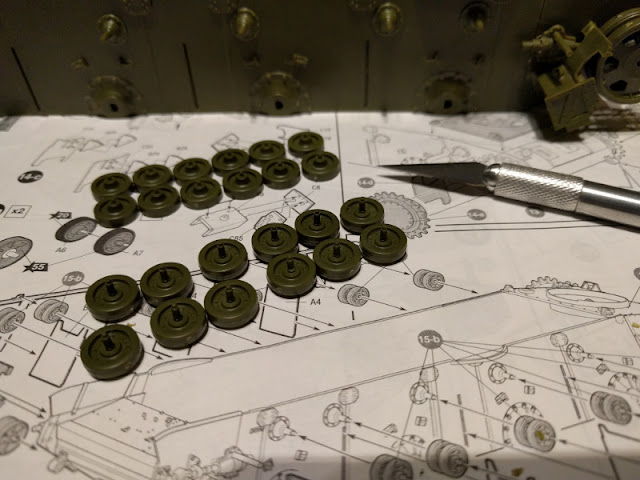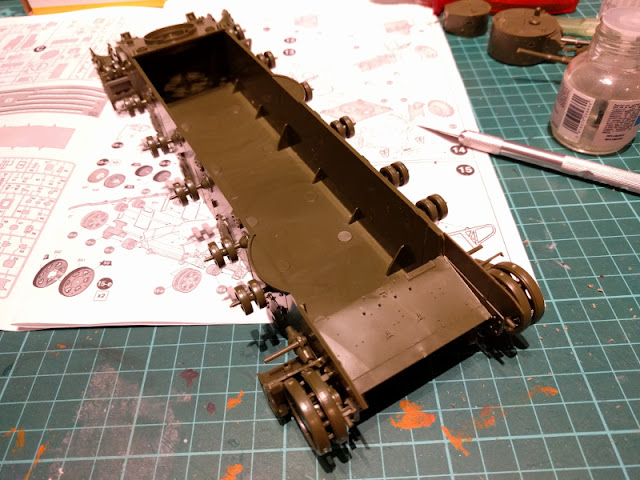The fascinating world of wheels
I was going to admit it openly, when building tracked vehicles, the road wheels with their cousins had always been the most !motivated phase. Not that they've ever taken that long or been that slow-progressing, but some how assembling dozens of rollers, wheels, sprockets and such have just been kind of boring and, yes, repetitive phase. Just like the description said.Nothing was missing next to the idler wheels, but like I mentioned the last time, the boxes next to the drive sprockets were missing some rollers and I fixed that as soon as I noticed my mistake. I did that by applying a bit of liquid cement to the joints of the box, then applied some firm but gentle pressure to crack one edge ajar. Then I glued and installed the missing bits and resealed the boxes. Nothing broke and I was on the map again.
The monster of a tank wanted as many as twelve return rollers to support the track on its way back. Because they were resting on pretty flimsy axles, I had to be quick yet careful while installing them.
After the return rollers I got to install those weird outwards-poking plates. Maybe I was looking at this vehicle with the wrong kind of glasses on, but considering the servicing, especially on the field, those sounded like one of the most stupid ideas. I could just imagine the amount of crap those'd collect while the tank was rolling in mud and who knows what else. But then again, how many tanks have I designed? And how many of those have gone into production, not to mention active use?
Exactly.
Then I got to glue a pretty amusing-looking setup to hold all the previous bits in place. Had this been a Kraut wagon, it'd been used to hang some Schürzen, but as this was a Soviet crawler...
I tried to take a couple of photos with something for scale, but my angles were somewhat suboptimal. The coin photo was a bit silly, as I didn't feel like going for a search for a one euro coin. Oh well, at least I got to play around a bit.














